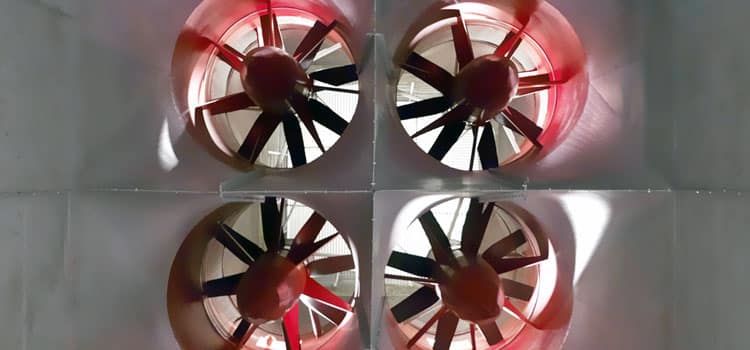Technical Information
Wind Tunnel Systems & Parts

[the_ad_placement id=”article-above-content-mobile-only”]
The goal of this article is to go over some of the lesser-known parts of a vertical wind tunnel. For all the tunnel terminology, check out our Glossary – Indoor Skydiving Terminology.
Anti-chamber
The anti-chamber is the area outside the flight chamber where flyers wait to fly. Depending on the type of tunnel, the anti-chamber may be sealed closed, locking while the tunnel is operating. Newer models allow the anti-chamber doors to be opened and closed while the tunnel is running, allowing participants to enter in and out of the tunnel as they please.
Air Lock
For tunnels that cannot open the anti-chamber doors while the tunnel is running, an advancement was made to add an airlock system that allows flyers to enter and exit the anti-chamber while the tunnel is running. All of the ISG tunnels are a good example of this.
The airlock works by creating a small chamber with a secondary door added on to the regular anti-chamber. Only one door at a time is opened. Flyers open the outside door, walk into the smaller air lock chamber, close the outside door and then walk into the anti-chamber.
Net
The net is a woven wire mesh at the base of the flight chamber. The net allows airflow through the chamber while keeping flyers safe.
The net is secured all around the tunnel using springs very similar to a trampoline.
Drivers Booth
The drivers booth is the area where the tunnel controller sits to control the wind speed and other functions of the wind tunnel.
Parts Specific to a Recirculating Tunnel
Louvre Doors
Louvre doors are added to the recirculating tunnel system allowing outside air to enter the recirculating airflow. This allows the outside air in, cooling the air temperature. The doors are normally controllable to regulate the amount of air entering the airflow.
Some of the newer tunnels use air conditioning instead of, or in addition to, louvre doors.
Turning Vanes
A turning vane is a meta-structure with curved inlets and outlets designed to change the direction of airflow while keeping the air moving. Turning vanes are used to direct air around the corners of a recirculating wind tunnel.
Air Conditioning
Because of the heat that builds from the friction of moving air in a recirculating wind tunnel, newer tunnels have adapted air conditioning to keep the tunnel cool and improve the flying conditions.
The air conditioning unit normally cools the last turning vane before the flight chamber. This cools the air as it passes through the turning vane.
Published: May 22, 2014 | Last Updated: December 5, 2022
Don’t miss an update!
Join our mailing list for the latest indoor skydiving updates delivered directly to your inbox.
"*" indicates required fields

